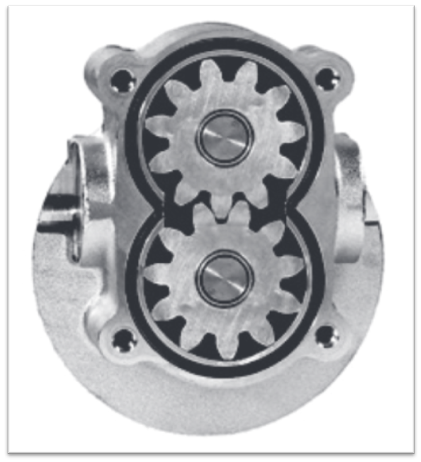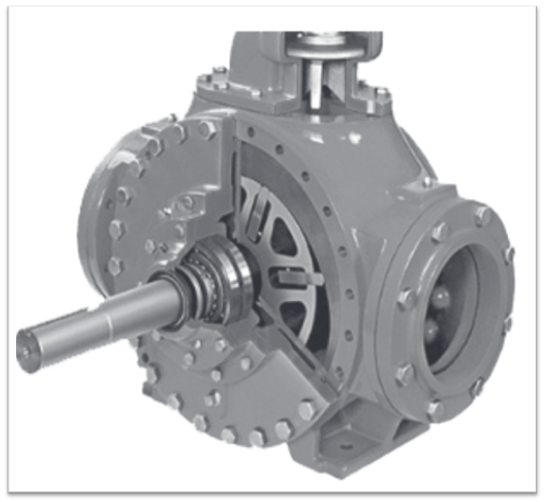Check valve in its closed position provide an efficient sealing, i.e., avoid leakage completely. But a simple check valve is not suitable for all systems, as it allows flow only in one direction. The need for a better functioning of valve is fulfilled by the use of a pilot operated check valve. Continue reading What is Pilot Operated Check Valve? Working, Types & Diagram
Category: Hydraulics & Pneumatics
What is Weight loaded Accumulator? Working Principle, Types, Advantages & Disadvantages
Weight loaded accumulator is one of the oldest accumulator. Continue reading What is Weight loaded Accumulator? Working Principle, Types, Advantages & Disadvantages
What is Hydraulic Motor? Working Principle, Types, Advantages & Disadvantages
Hydraulic motors are the type of fluid power motors in which hydraulic energy of oil is converted to mechanical energy (rotary motion and force) to perform some useful work. Continue reading What is Hydraulic Motor? Working Principle, Types, Advantages & Disadvantages
What is Gear Pump? Types & External Gear Pump (Working, Diagram & Advantages)
Gear pump is the positive displacement pump in which the suction is created by rotation and meshing of two gears. The fluid enters into the pump through the inlet and is transferred through the outlet port. It pumps the hydraulic fluid through two similar inter meshing spur gears, mounted in a casing, by displacement.

Figure 1: Gear Pump.
Continue reading What is Gear Pump? Types & External Gear Pump (Working, Diagram & Advantages)
What is Vane Pump? Working, Diagram, Parts, Types & Advantages
Vane pump is a rotary and positive displacement pump. The limitation of gear pump, i.e., leakage of fluids is greatly reduced using vane pumps (See Figure 1).

Figure 1: Vane pump.
A vane pump is a rotary pump, which is provided with different radial slots along with an eccentrically placed rotor. The eccentricity of the rotor causes the displacement of high quantity of fluid during delivery stroke compared to suction stroke. Thus, due to this fluid flow rate vane pump is utilized as variable displacement pump, by varying the eccentricity. The maximum discharge a vane pump can have is 1.5 lit/sec, whereas, its maximum pressure is 7 MPa.
Continue reading What is Vane Pump? Working, Diagram, Parts, Types & Advantages
What is Single Acting Hydraulic Cylinder? Construction, Diagram, Working & Applications
Single acting hydraulic cylinder is a type of hydraulic cylinder which provides the working force only in single direction. It consists of a piston which moves in a cylinder barrel and a piston rod is connected at one end. When the fluid is supplied into the cylinder through pressure port provided at piston side, piston moves towards left or forward as shown in figure 1. Thereby performing work, then piston returns by spring force provided at piston rod. Single acting hydraulic cylinders are used to perform various operations such as braking, locking, clamping, etc. Continue reading What is Single Acting Hydraulic Cylinder? Construction, Diagram, Working & Applications
What is Telescopic Cylinder? Construction, Diagram, Working & Applications
Telescopic Cylinder is a special type of hydraulic cylinder. It is used in applications where long extension strokes and small return strokes are required. Extension of this cylinder takes place in stages and every individual is provided with a stage sleeve which is fitted inside the previous stage. Continue reading What is Telescopic Cylinder? Construction, Diagram, Working & Applications
What is Pressure Reducing Valve? Construction, Diagram, Working & Applications
Pressure Reducing Valve is a type of pressure control valve, used to reduce the pressure at particular locations of the system. It is generally used in the hydraulic systems where the low pressures are required. This valve is actuated by down stream or outlet pressure, and is closed when this pressure reaches the valve setting pressure. Continue reading What is Pressure Reducing Valve? Construction, Diagram, Working & Applications
What is Counterbalance Valve? Construction, Diagram & Working
Counterbalance valves are used to maintain the back pressure on a vertical cylinder to prevent the load from falling due to gravity. Continue reading What is Counterbalance Valve? Construction, Diagram & Working
What is Air Receiver? Working, Diagram, Construction & Function
An Air receiver is a pressure vessel used to store compressed air supplied by the compressor. The reciprocating compressors and other intermittent discharge compressors will require an air receiver to discharge compressed air in the tank Ibr storage and further use. An Air receiver is a cylindrical vessel mounted vertically or horizontally with inlet and outlet connections of compressed air. Continue reading What is Air Receiver? Working, Diagram, Construction & Function